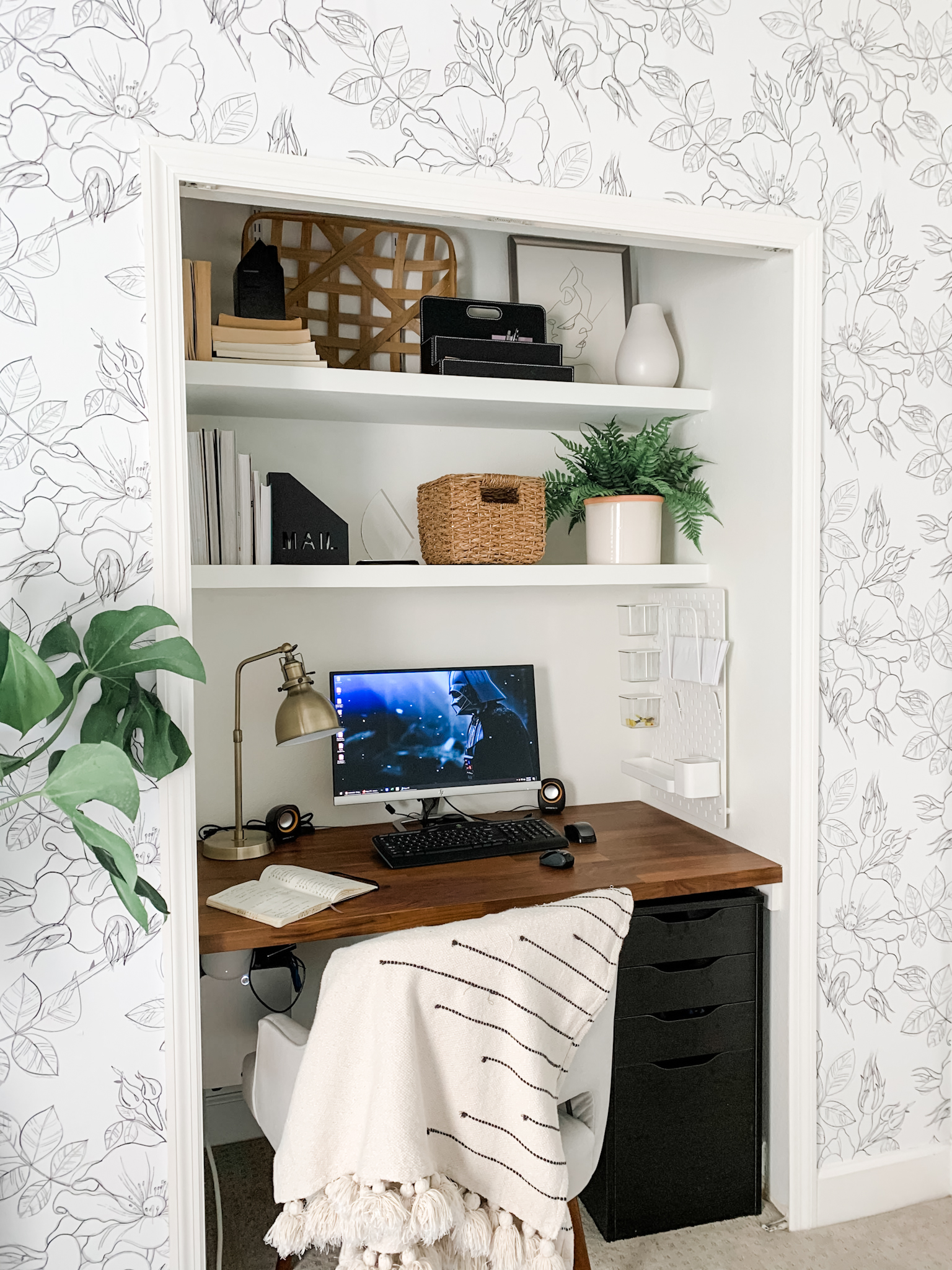In the era of remote work and ever-shrinking urban living spaces, finding a dedicated area to unleash one’s productivity can be a daunting task. Yet, in the heart of every home, there lies an underutilized gem waiting to be transformed – the humble closet. This article delves into the art of converting confined spaces into efficient and inspiring workstations, exploring design strategies, storage solutions, and technology integration that make it all possible.
Unleashing the Potential of Closet Spaces
The closet, often seen as a mere repository for clothes and forgotten items, holds untapped potential for transformation. By reimagining its function, we can turn this confined area into a compact yet fully functional workspace. The key lies in recognizing the unique architectural features of each closet, such as depth, height, and existing shelves or hanging rods, and leveraging them to create a personalized workspace.
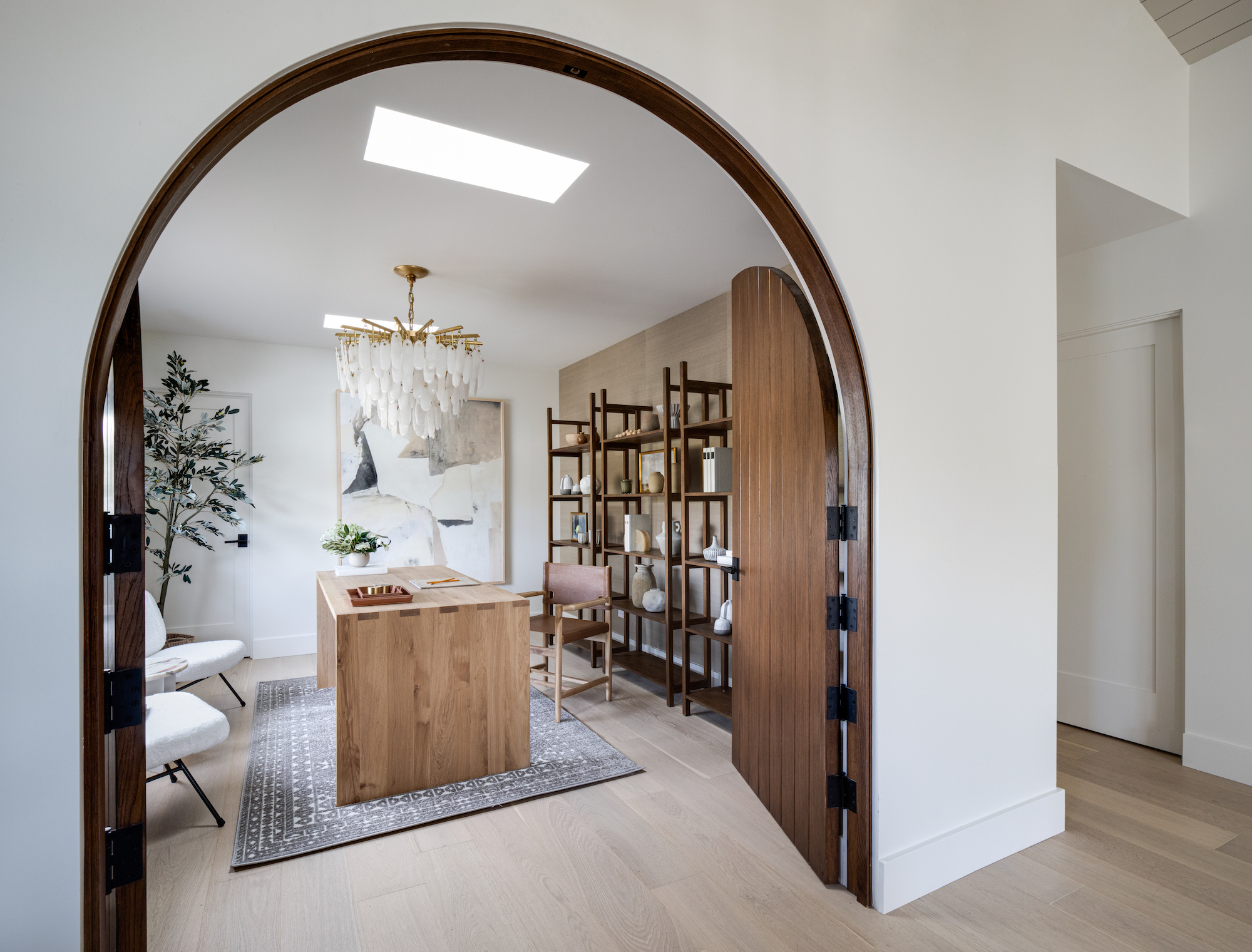
Designing for Functionality: The Spatial Puzzle
Maximizing Vertical Space: In tight quarters, verticality is your ally. Installing floating shelves or a custom-built desk that hugs the walls can free up floor space while providing ample surface area for work essentials. Consider a pull-down desk if ceiling height allows, maximizing use without compromising on the room’s openness when not in use.
Smart Lighting Solutions: Natural light is ideal, but in closet conversions, artificial lighting becomes crucial. LED strip lights under shelves, a task lamp affixed to the wall, or a pendant light centered above the workstation can illuminate the space efficiently without cluttering surfaces.
Color and Texture for Ambiance: Light colors on walls and furniture can visually expand a small space. Add depth with textured elements like a patterned rug or a statement wallpaper on one wall, creating visual interest without overwhelming the area.
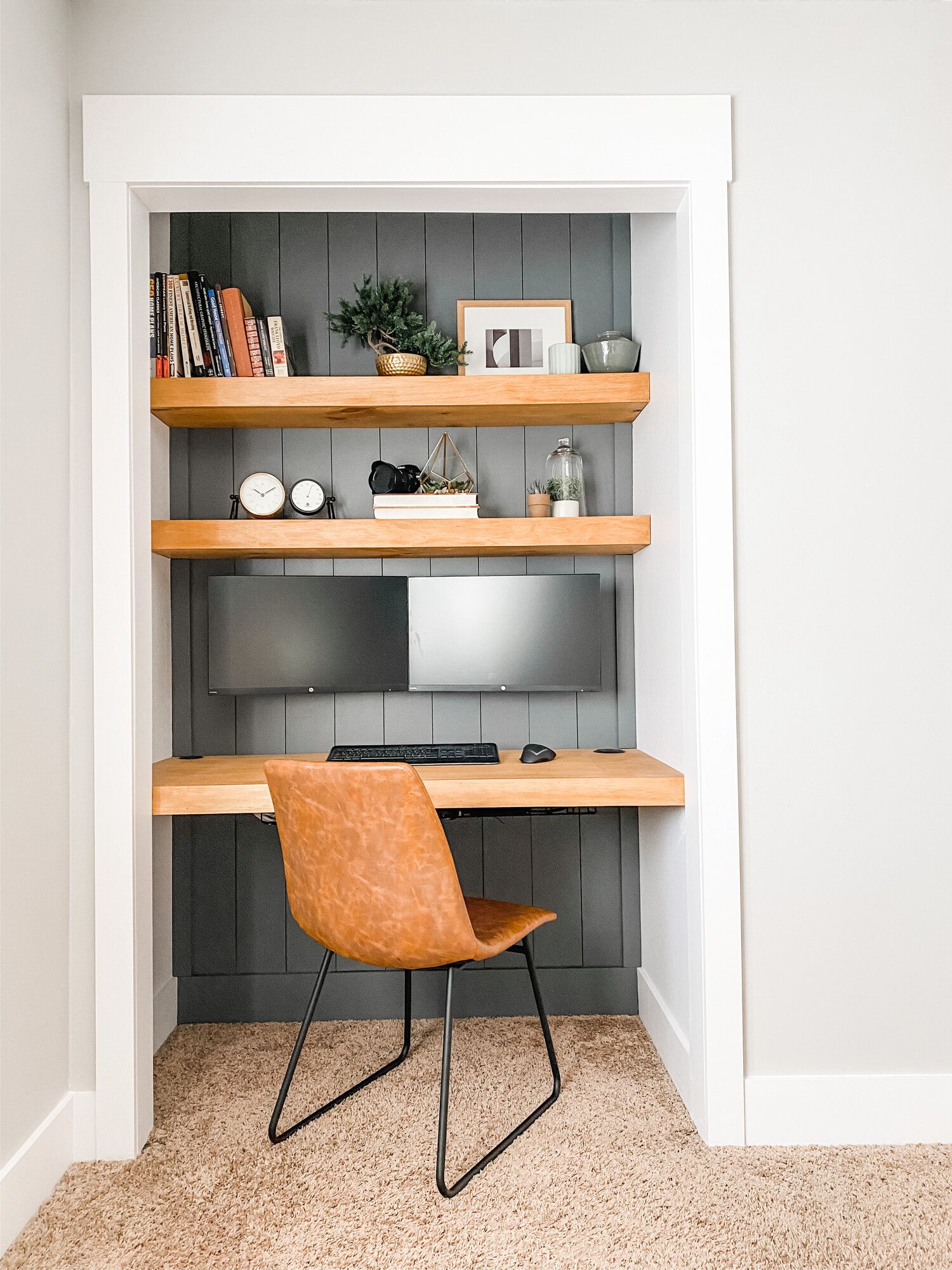
Storage Solutions: Conceal, Contain, Create
Multipurpose Furniture: In closet workstations, every piece must serve dual purposes. An ottoman that doubles as a storage bin, a filing cabinet that also functions as a seat, or a desk with built-in drawers can keep supplies at hand while maintaining a clutter-free environment.
Vertical Organizers: Utilize wall-mounted file holders, magnetic strips for tool storage, or pocket organizers to keep small items within reach but out of sight. This strategy keeps desktops clear for focused work.
Smart Shelving Systems: Adjustable shelves allow for flexibility as your storage needs evolve. Incorporate cable management systems to keep wires tidy and prevent tripping hazards in limited spaces.
Integration of Technology for Productivity
Cable Management and Wireless Freedom: Concealing cables behind wall-mounted desks or using cable ties and raceways maintains a clean aesthetic. Embrace wireless peripherals like keyboards, mice, and headphones to minimize clutter further.
Smart Home Integration: Voice-activated assistants and smart plugs can streamline your workflow. Control lighting, manage your schedule, or even automate your coffee machine with a simple voice command, enhancing productivity without leaving your seat.
Ergonomics: Comfort in Compact Spaces
Adaptable Seating: Choose an ergonomic chair that fits comfortably within the closet’s dimensions. Look for models with adjustable height, lumbar support, and a compact footprint.
Height-Adjustable Desks: A desk that can be raised or lowered promotes healthy posture and prevents long-term discomfort. Consider wall-mounted, fold-down desks that adjust to your ideal working height.
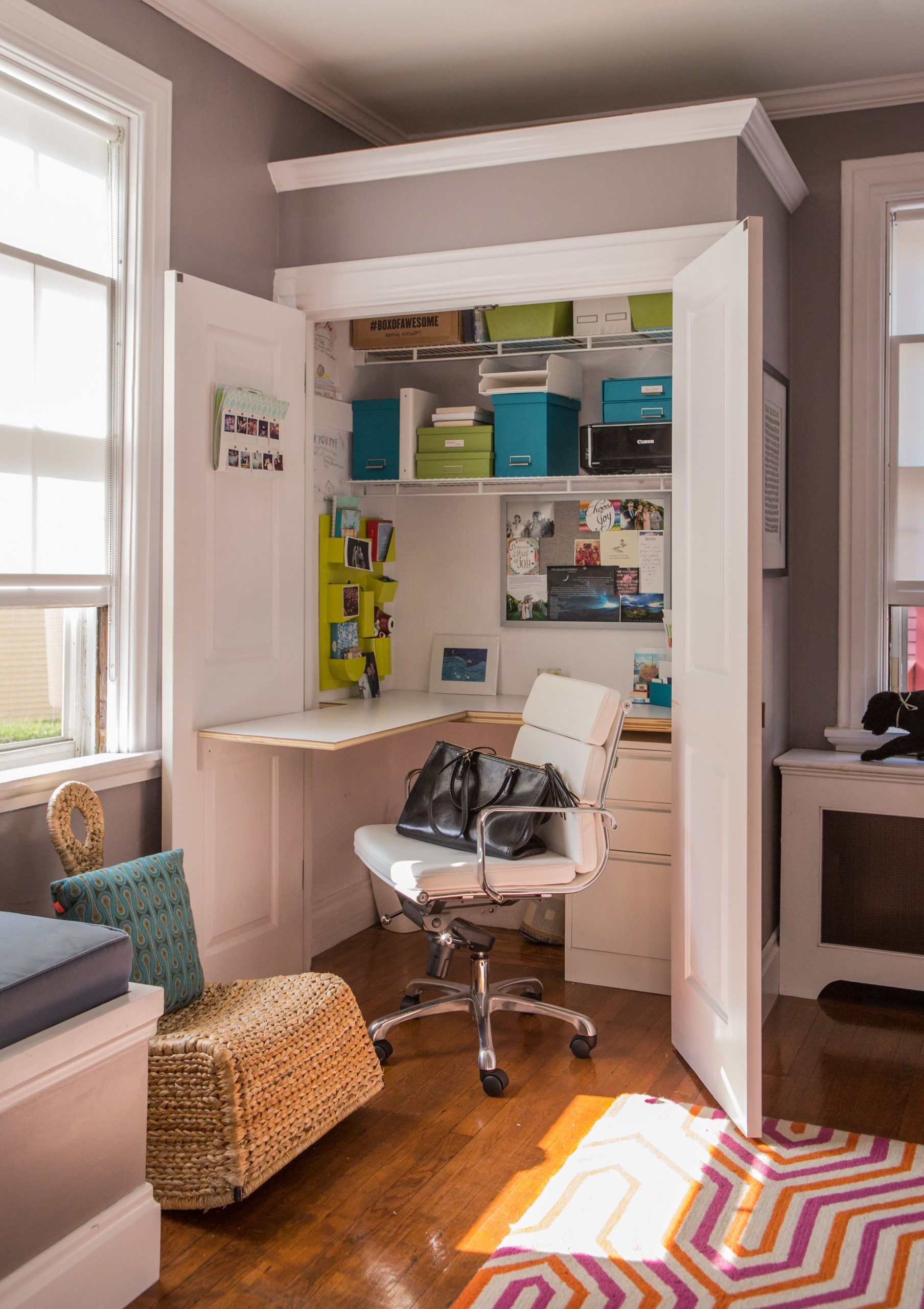
Mindful Design for Mental Well-being
Personal Touches: Integrate elements that inspire you – a favorite artwork, a motivational quote, or a small plant. These personal touches can boost creativity and foster a positive work mindset.
Soundproofing Measures: Add sound-absorbing panels or thick curtains to the closet door to minimize distractions from outside noise, creating a quiet oasis for focused work.
Breathing Space: Even in tiny areas, incorporate a small corner for meditation or stretching. Regular breaks in a dedicated relaxation zone can enhance mental clarity and reduce stress.
Enhancing Productivity through Environmental Control
Temperature and Airflow: In enclosed spaces like converted closets, air circulation and temperature control are vital for comfort and concentration. Install a compact desk fan or a small air purifier with a HEPA filter to maintain fresh air and a comfortable working temperature. If feasible, consider adding a mini-split air conditioner or heater to regulate the climate during extreme weather.
Natural Elements for Inspiration: Bring life into your closet workspace by incorporating natural elements. A small potted plant, a herb garden under grow lights, or even a living wall can enhance air quality, introduce a touch of greenery, and promote a sense of calm.
Time Management Tools: To optimize productivity, integrate time-management tools within your workspace. A small whiteboard or a corkboard can host daily to-do lists, project timelines, or motivational reminders. Digital tools like a smart clock with integrated calendar alerts can also help maintain a structured workday.
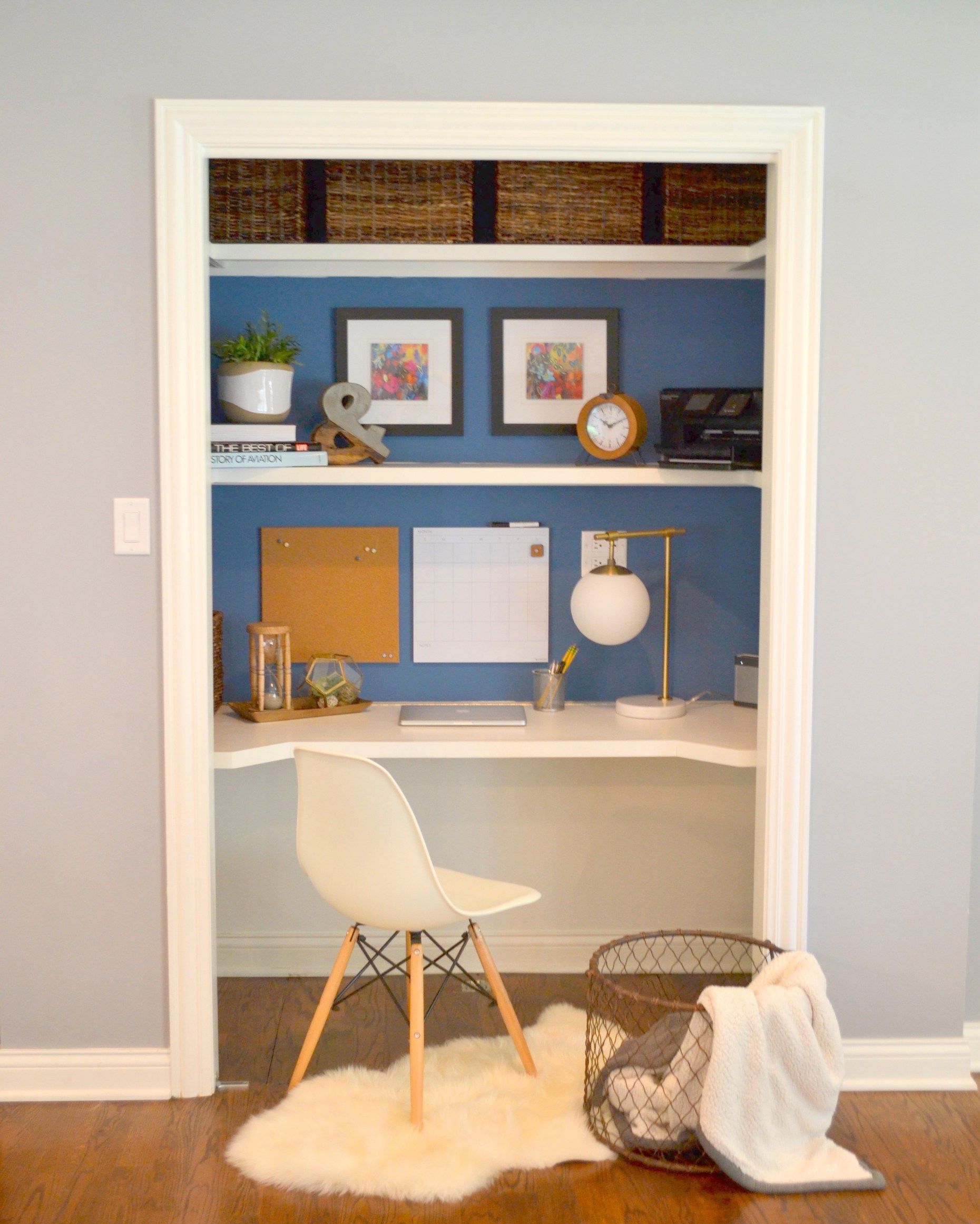
Flexible Workspace Boundaries:
When converting a closet, it’s essential to establish clear boundaries between work and personal life, especially in shared living spaces. Use sliding barn doors or curtains to physically separate your workspace when needed. This not only creates a psychological barrier between work and relaxation areas but also helps contain any work-related mess or noise.
Sustainable Choices for a Greener Workspace:
Opt for eco-friendly materials when outfitting your closet office. Bamboo or reclaimed wood for desk surfaces, non-toxic paint, and energy-efficient LED lighting contribute to a healthier environment and align with sustainable living practices. Additionally, use rechargeable batteries for wireless devices and choose a laptop or other equipment with high energy efficiency ratings.
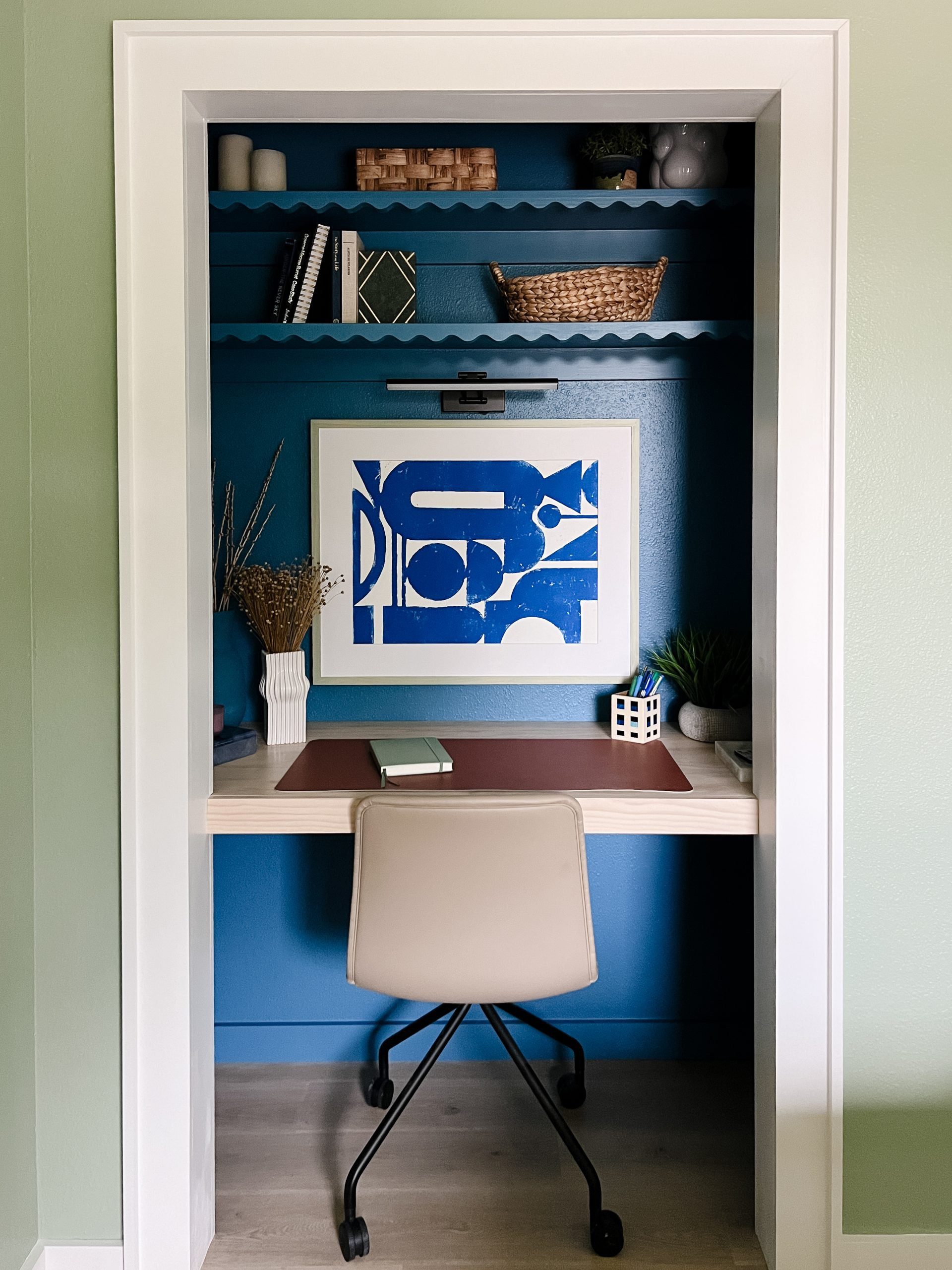
Conclusion: Small Spaces, Big Ideas
Transforming a closet into a functional workstation is more than just a spatial challenge; it’s an exercise in creative problem-solving and personal expression. By embracing smart design principles, integrating technology thoughtfully, and prioritizing ergonomics and well-being, even the tiniest of spaces can become a haven for productivity and inspiration. With careful planning and a touch of ingenuity, closet creativity can unlock new dimensions in our homes and our work lives.
